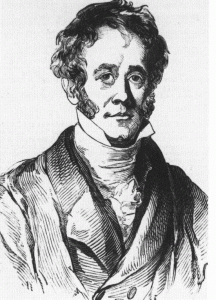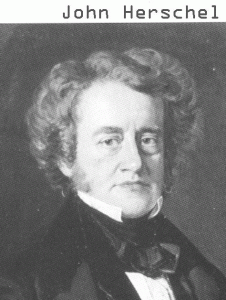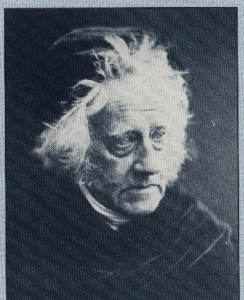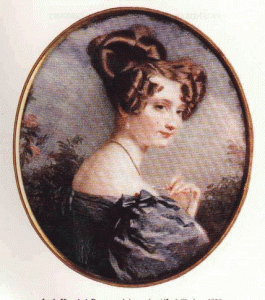| HERSCHEL, John Frederick Willem [Sir] Visiting Professional Astronomer .Born: 1792 March 7, Slough, United Kingdom. Died: 1871 May 11, |
 |
|
|
|
Famous for
- Herschel set up a catalogue of double stars, nebulae and clusters of the Southern Sky.
- Herschel helped to lay the foundations of education in South Africa.
- Herschel was a pioneer of photography. He first described the use of sensitive paper, and used “hypo”, or hypo sulphite of soda, as a fixing agent. Herschel first used the terms ‘positive’ and ‘negative’, and he may have coined the term ‘photography’ (under dispute).
- Co-founder and first President of the Royal Astronomical Society.
- John Hershel was one of the worlds greatest polymaths. He was one of the greatest popularisers of science in the 19th Century, and came to symbolise the Victorian Enlightened Scientific Gentlemen although he did not make any breakthrough scientific discoveries himself.
Summary
John Herschel comes from an astronomical family. His father was William Herschel, the discoverer of the planet Uranus and compiler of double stars and nebulae in the Northern Hemisphere. His father also provided the first reasonably accurate scheme of the shape of the Galaxy. Following in his father’s footsteps, he helped to establish the Royal Astronomical Society (originally the Astronomical Society of London) and served, as its first President. John came to Cape Town and duplicated his father’s double star and nebulae catalogue for the Southern Hemisphere. It is important to note that although he was influential in establishing the Cape Observatory he was never officially connected with the Observatory (was never it’s director or an employee), but he worked in close association with the Observatory. Herschel was very interested in the theory of light and photography. Apart from his astronomical interests, he served on the committee that laid the foundation for Education in South Africa.
|
Historical Index: |
“As the son of Sir William Herschel, who discovered the planet Uranus and compiled catalogues of northern-hemisphere double stars and nebulae as well as providing the first reasonably accurate scheme of the shape of the Galaxy, John began life with every possible advantage. Whereas his father (William) was raised as a musician and had very little education, John had the personal tuition of his father and went to excellent schools. He attended Eaton, and then went to St. John’s College at Cambridge. After graduating from Cambridge he worked with Sir James South in re-examining the nebulae and clusters described in his father’s lists, making 525 additions to the catalogue”. [Moore p. 50. Warner – Astronomers, p.39.]
“At Cambridge he was Senior Wrangler (Fallows was Third) and First Smith’s Prizeman. (“Wrangler is the name given in the University of Cambridge to those who have attained the first class in the public mathematical honours examination. The word itself is derived from the public disputations in which candidates for degrees were, in former times, required to exhibit their powers. [Moore, p. 44. Warner – Astronomers, p.39.]) Although Hershel achieved to become Senior Wrangler he was very much opposed to the Mathematical Tripos course based on Newtonian Mathematics. Herschel with Charles Babbage and George Peacock founded the “Analytical Society” who did much to break a very conservative mold of teaching and helped to introduce the analytical mathematics of Laplace to England. [Case, pp. 38 – 43.]
At the age of 21 John was elected as a Fellow of the Royal Society due to his remarkable mathematical talent. For the next few years he vacillated between the Church (his father’s choice), law, optics, mathematics and chemistry experiments. In 1816 Sir William, then 78 years old, needed his son’s assistance in continuing astronomical observations at Slough. So John learned astronomy, and over the next 15 years repeated his fathers survey of the northern hemisphere, finding and adding many previously unrecorded nebulae and double stars to his father’s catalogue. [Warner – Astronomers, pp.39-40.]
An early publication, at the age of 28, was A Collection of Examples of the Application of the Calculus of Finite Differences. In 1826 the Royal Society awarded him and South a gold medal apiece for their observations of double stars. His treatises on sound and on the theory of light appeared in the Encyclopaedia Metropolitana in 1830 and 1831; his treatise on astronomy and his “preliminary discourse on the study of Natural Philosophy” in Lardner’s Cyclopaedia. Throughout his life he went on contributing valuable papers to scientific journals.
He took an active interest in the development of the Royal Astronomical Society (originally the Astronomical Society of London, 1820’s) and served as its first President. [Warner – Astronomers, p.1]
The range of his scientific interests was remarkable. For instance, his researches on the undulatory theory of light would alone have brought him fame. Moreover, he made important progress in the new science of photography, independently of Fox Talbot. He discovered – and described to the Royal Society on 14 March 1839 – the photographic importance of sensitised paper, and he was the first to use “hypo”, or hypo sulphite of soda, as a fixing agent. It has been said that he was the first to coin the word “photography”, and it is quite certain that when you use the terms “positive” and “negative” as they relate to photography you are recalling the terms which Herschel invented”. [Copied from Moore p. 51.]
The need to extend his fathers survey to the southern hemisphere must have frequently crossed his mind. In 1830 an event occurred, which helped him make up his mind. The President of the Royal Society, Davies Gilbert, announced his retirement. The Duke of Sussex was proposed as candidate for the Presidency, not because of his achievements, but because of his connections to Royalty. This angered the scientist and they contested the election with their own nominee, John Herschel. This attest to the high regard the scientific community had of Herschel. He apparently accepted the nomination with reluctance, and lost by 111 to 119 votes. This event helped him to make up his mind and a few weeks later he started preparations to go to the southern-hemisphere. [Warner – Astronomers, p.40.]
Herschel at the Cape
Herschel moved to the Cape. “It is often supposed that Herschel was in some way officially connected with the Royal Observatory. He was not; but his presence during the early years of Maclear’s work there was invaluable. The two men became fast friends, a friendship founded on mutual respect; it is not too much to say that had it not been for Herschel, with his constant stream of helpful suggestions and his warm personality, the first four years of Maclear’s work would have been much less pleasant than they actually were – and considerably less fruitful. At this stage Herschel was world-famous, while Maclear was at the start of his astronomical career. It has been said that at the beginning of their association it was Herschel who provided the necessary impetus, while Maclear was still groping uncertainly to decide exactly where his most useful work might lie. Later, the roles were somewhat reversed, as Maclear’s self-confidence grew. Whatever may be the truth of it, the two men remained firm friends to the end of their lives”. [Copied from Moore pp. 51 – 52.] As a matter of fact, Herschel and Maclear were friends in the U.K., and Herschel’s move to Cape Town helped to make up Maclear’s mind to accept the post as Her Majesties Astronomer at the Cape of Good Hope. They arrived in Cape Town a few days apart. [Warner – Astronomers, pp.40 – 41.]
Once at Cape Town, Herschel stayed at Feldhausen. At first he rented and later purchased the estate in that is located on the border between Wineberg and Claremont. His decision was influenced by the previous director of the Cape Observatory, Thomas Henderson. Henderson detested the site of the Cape Observatory and commented to Herschel that the Wineberg area is much better suited for astronomy and better protected from the wind. [Warner – Astronomers, pp.44 – 45.] Some of the prominent visitors he received, included Charles Darwin; Sir John Franklin (discoverer of the Northwest Passage); D’urban; Napier; Kok; Waterboer.
Astronomy: “Herschel had been pursuing his programme of cataloguing the clusters, nebulae and double stars of the southern sky. His father, Sir William, had devised a method of observation, which he termed “sweeping”. This was done by fixing his telescope at a particular declination and recording the objects, which were carried through the field of view by virtue of the Earth’s rotation. Sir John swept in declination; he was remarkably accurate and even today some of his observations have not been bettered. [Copied from Moore p. 60.]
In his four years at the Cape, Herschel had accomplished his aim of surveying the southern sky, discovering in the process 1 700 nebulae, 2 100 double stars and a miscellany of other astronomical notabilia. [Warner – Astronomers, p.53.] “True, his catalogue of nebulae has stood the test of time more successfully than his list of double stars. In many cases he listed optical pairs – that is to say, doubles which are not made up of two stars which are genuinely associated. However, his catalogue of nebulae was first-class. It even contained several objects which we now know to be external galaxies, many of which are spiral in shape (though the spiral forms were not described until 1845, by the Earl of Rosse – with the aid of his vast 72-inch reflector at Birr Castle in Ireland). [Copied from Moore p. 60.]
“Herschel’s drawings were, in the main, excellent, but are not consistent; it has often been commented that some easily-observed objects were inaccurately represented, while the much more difficult ones were drawn with surprising correctness. One feature to which he devoted special attention was the nebulae round the erratic variable star Eta Argus, now known as Eta Carinae. (The old constellation of Argo Navis, the Ship, has been split up; Carina is its keel – containing Canopus, the second brightest star in the sky.) Herschel spent many nights in drawing the nebula, and he also made notes about the rise to brilliance of Eta. ……” At this time Eta Carinae was probably the most luminous star in the entire Galaxy, but since Herschel’s time it has fallen from grace, and for almost a hundred years now it has been invisible to the naked eye. Today it looks very red, and is obviously not a normal kind of star; it is in a class of its own. Astronomers would dearly like to see another outburst. Few accurate estimates of it were made when it was near its peak, so that Herschel’s observations were timely”. [Copied from Moore pp. 60 – 62.]
“As a further aside, Herschel was also the last to record Halley’s Comet as it receded from the Sun after passing perihelion in 1835”. [Copied from Moore p.62.]
“To carry out his work of cataloguing, Herschel had to know the right ascensions and declinations of marker stars which acted as reference points when he wanted to measure the positions of the new objects which he was discovering night after night. In this he was greatly assisted by Maclear, who obtained the required information by using the transit circle and mural circle which had been sent out and set up at the Royal Observatory.” [Copied from Moore, pp. 60 – 62]
“Herschel’s influence on cultural matters while in residence at the Cape was very great. With a small, carefully-chosen committee he laid the foundations of education in South Africa, and was assiduous in ensuring that it was put into effect after he returned to England”. [Copied from Moore, p. 63] This committee had far reaching impact on the history of South Africa.
Herschel assisted Maclear in setting up a Meteorological Committee. [Smits]
Herschel sketched various indigenous flowers. [Smits]
“When he announced that his astronomical work had been completed, and that he was about to leave the Colony, the South African Literary and Scientific Institution, of which he was President, gave him a specially-designed gold medal which he cherished above many of the other honours which were bestowed on him”. [Copied from Moore, p. 63] The medal was acquired by The South African Museum, where it was stolen.
Herschel made a great impact on Cape society and when he left the idea was proposed to erect a monument to him. A newspaper war ensued over the best site. The Grand Parade was proposed but those who proposed the Feldhausen won. [Warner – Astronomers, pp.54 – 55.] “A fund was raised to erect a monument on the spot where his 20-ft. reflector had stood; and after his departure, this was done. As we have noted, it took the form of an obelisk. It was carved from giant blocks of Craigleath stone from a quarry outside Edinburgh, and it arrived in two packing cases in August 1841. Work on the monument took six months to complete. In its foundations were buried glass bottles filled with silver and copper coins; there were also inscription medals and medals of the South African Institution bearing statistical and geographical notices relating to the Colony. There were engravings of nebulae observed by Herschel at Slough, together with a plan of Maclear’s triangulation, connecting Feldhausen with the site of La Caille’s observatory and the Royal Observatory, four miles away. Other items, such as details of the discoveries made by Captain Ross in the south Polar Regions in 1841, and the measurement of the arc of the meridian in 1842, were added before the base of the structure was finally sealed”. [Copied from Moore, pp. 63 – 64.] The Obelisk was declared a National Monument (No. 38) [Smits]
The Herschel family returned to England in the Windsor on 11 March 1838. “Herschel returned home to a hero’s welcome …the young Queen Victoria conferred a baronetcy upon him, and his subsequent career was one long succession of triumphs. A contemporary said of him: “Love of truth was in him absolutely untainted by the egotism of the discoverer.” Sir John may not have possessed the genius of his father, but his contributions to science covered a far wider range. He lived on until 1871″. [Copied from Moore, p. 66.]
Because of Herschel’s friendship with Maclear he now used his position of influence with the Admiralty to further the cause of the Cape Observatory. Due to this influence the Cape Observatory received new equipment, as well as more assistants. For example the problematic Jones Mural Circle was replaced with the Greenwich Mural Circle, the Bradley Zenith Sector was loaned to help with the re-measurement of the Arc of the Meridian, new instruments such as the 7-inch Merz refractor was acquired and William Mann was appointed as second assistant. [Warner – Astronomers, pp.55 – 63]
In 1934 Cape Town hosted a Centenary celebration for Herschel stay at the Cape. [Warner – Astronomers, p.55.]
Career
- Cambridge Senior Wrangler and First Smit’s Prizeman.
- Herschel and Sir James South re-examined his father’s list of nebulae and clusters, and made 525 additions to the catalogue.
- First publication at the young age of 28 years. For more, click here
- 1826: Royal Society Gold Medal for their additions to his father’s catalogue.
- 1830: Encyclopaedia Metropolitana carries his treatise on sound and theory of light.
- 1831: Lardner’s Cyclopaedia carries his treatise on the Study of Natural Philosophy.
- 1831: King William IV created him a Knight of the Royal Hanoverian Guelphic Order.
- 1834: (January 16) Herschel arrived at Cape Town. (Herschel arrived ten days after Maclear)
- Cape Town. Create Catalogue of Southern Sky.
- 1838 (March 11) Return to U.K.
- Honours bestowed on Sir John Herschel:
1826: Royal Society Gold Medal. [Moore p. 51]
1831: Knight of the Royal Hanoverian Guelphic Order.[Moore, p. 51.]
Special Gold Medal: South African Literary and Scientific Institution. [Moore, p.63.]
Queen Victoria conferred Baronetcy. [Moore, p. 66.]
Personal
- 1829 (March 3): he married a Scottish girl, Margaret Brodie Stewart, and their union was described as being “of unclouded happiness”. [Moore p. 51.]
- 1871 (May 11): Died
Herschel belonged to many Committees:
- Elected Fellow of the Royal Society. (U.K.)
- Co-founder and first President of the Royal Astronomical Society.
- President of the South African Literary and Scientific Institution.
- With a small, carefully-chosen committee he laid the foundations of Education in South Africa.
- Herschel assisted Maclear in setting up a Meteorological Committee.
- Committee of the Association for Exploring Central Africa. [Warner – Astronomers, p.70.]
John Herschel’s sixth daughter named Julia, married the son of Thomas Maclear, John Fiot Lee Pearse Maclear (called Jack) on 4 June 1878. Jack joined the Royal Navy and rose to the rank of Admiral. There was some parental opposition to the marriage as Jack was seen as an unsophisticated sailor. [Warner – Astronomers, p.77.]
Instruments
20 ft Telescope
7 ft. Telescope
14 ft Telescope. This instrument was acquired and used by the Cape Observatory, but Herschel helped to maintain it.
Sources
Photography
- Notes on photography [He was fascinated by photography] (Museum Africa MA 50/830) (R 11)
- Photo Album (by Julia Cameron?) (Museum Africa acquisition. no. 68/70) (Museum Africa 50/221) (R 11)
Paintings
- Museum Africa (MA 774) (MA 76/47[1]) (R 11)
- Museum Africa (MA 76/1140) (R 21)
- Africana Museum (Moore p. 50.)
Physical
Obelisk (National Monument No. 38) erected at the spot where the 20-ft. telescope stood at Feldhausen. Today this obelisk stands in the terrain of Grove Primary School.
Medal: “When he announced that his astronomical work had been completed, and that he was about to leave the Colony, the South African Literary and Scientific Institution, of which he was President, gave him a specially designed gold medal which he cherished above many of the other honours which were bestowed on him”. [Copied from Moore p. 63.] The South African Museum acquired the medal, but it was stolen. [S.A.C.H.M. acq. no. M:E2c: 42]
Feldhausen: (Observatory)
Herschel stayed at Feldhausen whilst he was in Cape Town. (Errata: The book by Moore incorrectly locates the premises of Feldhausen at Claremont, it is in Wynberg, Cape Town)
Bibliography
- Evans, D.S. et. al.: HERSCHEL AT THE CAPE; Diaries and Correspondence of Sir John Herschel 1834 to 1838. Balkema, Cape Town, 1969
- Case, S. and Verbrugt, L.M. (ed): “The Cambridge Companion to John Herschel”, Cambridge University Press, 2024. ISBN 978-1-009-23767-3
- Moore, P. & Collins, P., Astronomy in Southern Africa, pp. 50 – 55, pp. 60 – 66. (General Source)
- Smits, P., A Brief History of Astronomy in Southern Africa. (Unpublished)
- Stoy, R.H., Astronomy in South Africa, A history of Scientific Endeavour in South Africa. Royal Society, 1977.
- Warner, B., Astronomers at the Royal Observatory Cape of Good Hope.
Publications by Herschel
Sir John Herschel was a prolific publisher. The list of publications is too long to mention here is copied under Sources. The original article from which it is copied is:
-Crowe, M.J., The Publications of Sir John Herschel, Warner, B. (ed.): JOHN HERSCHEL 1792 – 1992, Bicentennial Symposium (6 March 1992 / Held in Herschel School, Claremont, Cape Town). Royal Society of South Africa, 1992. [ISBN 0-9583958-1-0] pp.125 – 140.
Diary: Described as personal, scientific, peculiar. [Moore pp. 62 – 63. / Evans p. ?]
Collection of his papers held at the Library of the Univ. of Texas at Austin. [Evans in the Acknowledgements]
Archival
THE LIBRARY, UNIVERSITY OF WITWATERSRAND, JOHANNESBURG [JHA8, p. 218.] Letter from Herschel 1834 March to his brother-in-law Dr Stewart (Ref. A52).
– Letter from Herschel 1836 February 17 to Dr J. Philip, referring to Cape colonial matters (Ref. Fairbairn Papers, A663/Fal).
-Typescript transcript of letter 1852 March 21, to Sir Roderick Murchison, recommending A. G. Bain and his geological work (Ref. Bain Papers A6).
AFRICANA MUSEUM, JOHANNESBURG [JHA8, p. 218.]
-Herschel MS notes dated 1844 July 22 on experiments for obtaining photographic designs on paper from a daguerrotype plate (Ref. 50/830). Printed astronomical observations in German (with MS notes in English) from Herschel to Maclear 1842 November 15 (Ref. 836).
SOUTH AFRICAN PUBLIC LIBRARY, CAPE TOWN [JHA8, p. 220.]
-Herschel: Hourly meteorological observations made in the summer solstice 1835 at the Cape of Good Hope. MS copy by C. Piazzi Smyth.
-Herschel: Five letters written 1834-47 to W. H. Smyth.
-Herschel: Camera Lucida drawings (nearly 200)-see list published in Quarterly bulletin of the South African Library, xii (1957), 73-82.
SOUTH AFRICAN ARCHIVES, ROELAND STREET, CAPE TOWN [JHA8, pp. 220 – 221.]
-Maclear-Mann Papers (Accession No. 515): this extensive accumulation of manuscripts and correspondence is contained in 139 files. They derive from presentations made by members of the Maclear family and from donations from the Trigonometric Survey and from the Royal Observatory, Cape. Although mostly concerning Sir Thomas Maclear and William Mann, a considerable amount of material relates to Sir John Herschel and to the early history of the Cape Observatory. Excluding miscellaneous files of accounts, testimonials, newspaper cuttings, etc., the most significant references are:
Files 22 Include observations of lunar eclipse (Herschel), observations made at Hartwell (W. H. Smyth).
99 Accounts of Royal Observatory 1828. Numerous letters from John Herschel to Maclear. Other Herscheliana, including set of drawings of southern nebulae by John Herschel and a draft of his proposed southern constellation reform.
| Related Internal Links: Feldhausen Observatory. Herschel 20 ft telescope . Related External Links Letters and Papers of Sir John Herschel from the Archives of the Royal Society: Biography: Mathematics; The Open Encyclopedia Project: Photography: Photo 1: Photo 2: Photo 3: |
Gallery
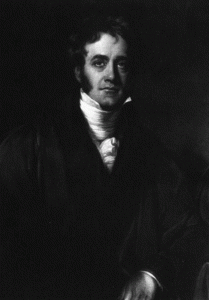
Sir John Herschel.
Courtesy of Africana Museum, Johannesburg. Source: Moore

